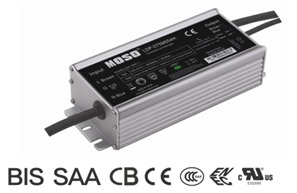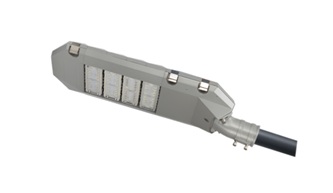The advantages and disadvantages of network cameras and HD-SDI cameras have been discussed in a large number of articles. In a long period of time, there are applications in their respective fields, which cannot be easily replaced with each other. For the foreseeable future, who can guarantee that some technical barriers will not be broken? Just like the optical fiber transmission technology. For the same video application, there may be many types of devices, and it is also because of the need to adapt to local conditions in different environments. Compared with IP cameras, HD-SDI has better technical stability and simpler circuit, so the reliability of the product is higher.
This article refers to the address: http://
Today's long-distance video transmission generally uses optical fiber transmission, and the convenience of optical fiber transmission. It goes without saying that the engineering application of the camera, in addition to considering the stability of the product, also needs to consider the simplicity and convenience of the engineering wiring. In the long-distance transmission of HD-SDI cameras applied in engineering, HD-SDI cameras and HD-SDI optical transceivers are often used. In the simplification of products, this method will be slightly bloated. In the harsh construction site, reducing the connection between equipment will greatly simplify the complexity of the construction, and the point of failure will be greatly reduced. Therefore, combining these two devices into a reliable and stable product will solve this series of problems. There are not many HD-SDI cameras integrated with optical fiber transmission on the market. The following describes the principle and application.
A typical HD-SDI camera has the following components.
Optical sensor (Sensor), image signal processing (Isp), SDI encoding.
1, light sensor
It is used to monitor the light of the scene and convert the image of the light signal into an image of the electrical signal.
2, image signal processing
The original electrical signal image is processed and converted into a standard video format output, such as BT1120.
3, SDI coding
The standard video is SDI encoded by the encoding chip, and the high-definition SDI signal is output from the BNC. SDI coding can be implemented by FPGA or by some specialized coding chips. The former is more flexible, but the algorithm is not easy to do. The latter is relatively simple and stable.
The first two parts of the fiber-optic HD-SDI camera are the same as the general HD-SDI camera, and the difference is the transmission part of the back end. In addition to outputting HD-SDI signals through the BNC head, the optical HD-SDI camera also needs to transmit the HD-SDI signal into an optical signal and transmit it through the optical fiber through the optical transmission module.
Take a 1080P optical HD-SDI camera from the company where the author is located. The light sensor uses Sony's latest 1/2.8-inch 3 megapixel CMOS sensor, and then works with Sony's CXD4191GG processing chip to process the video signal. YUV signal in BT1120 format. The image signal acquisition and processing has been completed so far.
The SDI code uses the SDI-specific coding chip GV7600 from Gennum. The GV7600 chip is very powerful and supports a wide range of formats, including 720P, 1080I, 1080P and other high-definition video formats, and it also supports audio embedding. The sound sample of the microphone or pickup is processed into an SDI signal together with the high-definition video signal by processing such as amplification, filtering, and ADC.
The GV7600 has two mutually inverted SDI outputs, one of which encodes the input BT1120 format YUV into an SDI signal that is output through the BNC header. The other way is input to the optical transmission module, waiting for the signal to be restored and output through the optical fiber.
The FPGA in the optical transmission module restores the SDI signal of the GV7600, and the processed signal is sent out through the optical transmitter.
Different optical transmitters are configured, and the transmission distance of the optical fiber can be 20 kilometers or more depending on the transmission power.
The high-definition video optical signal is transmitted through the optical fiber, and the HD-SDI optical transceiver can restore the high-definition video signal to the image at the receiving end to complete the transmission and reception of the high-definition video signal.
This camera has a menu function, which can easily open the menu configuration parameters through the menu button of the tail panel. In addition, it can also use the 485 interface to perform the same operation of the menu button through PELCO-D and PELCO-P protocols.
The optical fiber HD-SDI camera has the SDI signal output of the BNC interface and the SDI signal output of the fiber interface, and the optical transmission module is optional. Therefore, the optical fiber can be used in the case of the HD-SDI camera. HD-SDI cameras can also meet the need for long-distance fiber transmission, eliminating the need to install additional HD-SDI optical transmitters, directly addressing video signal lightning protection and improving equipment stability. Sex. At the same time, it is small in size and suitable for use in different environments.
MOSO dimmable LED Driver is designed for various types of exterior or industrial LED lighting, including LED roadway lighting, LED street lighting, LED flood lighting, LED highbay lighting, LED high mast lighting, LED architecture lighting, etc. The driver is compliant to all 0~10V and PWM dimming controllers, dimming systems, and smart control systems.
All dimmable LED Drivers comes with compact size and IP67 protection. So the same driver can be used for independent or built-in a waterproof power supply chamber. There is no limitation of the IP rating of the luminaire housing.


The ProgrDimmable LED Driver operates in constant current model. There are two types dimmable LED drivers available in MOSO: 1) Programmable Dimmable LED Driver, or constant current dimmable LED driver.
A programmable dimmable LED driver can be monitored by an infrared-based programming device, to deliver different output current and voltage values to LED modules. With one driver, you can use it for different light fixture designs. The fully programmed drivers offer all dimming options (0-10V/PWM/Timing
control/DALI) and a wide range of output current in a single driver, which
deliver maximum flexibility with customized operating settings and intelligent
control options for lighting manufacturers. The Programmable dimmable LED drivers obtained many global safety certifications,
including UL, CE, TUV, ENEC, CB, SAA, BIS, KC, etc, they are compatible with the safety regulations
in different countries.
A constant current dimmable LED driver will only deliver fixed output current, you are not able to change the Iout like a programmable driver. The driver is competible with 0-10V / PWM / DALI dimming prootcols.
The compact metal case and high efficiency enables the power supply to operating with high reliability, and extending product lifetime to at least 50,000 hours. Overall protection is provided against lightening surge, output over voltage, short circuit, and over temperature, to ensure low failure rate.
MOSO grants the product with 5 years global warranty. Customer can refer to Warranty policy, find the closest MOSO distributors or sales representatives, to get a local replacement in case of any failure.
Dimmable LED Driver
Dimmable LED Driver,Dimmable LED Lighting Driver,Dimmable Slim LED Driver,Dimmable Tunnel Light LED Driver
Moso Electronics , https://www.mosoleddriver.com